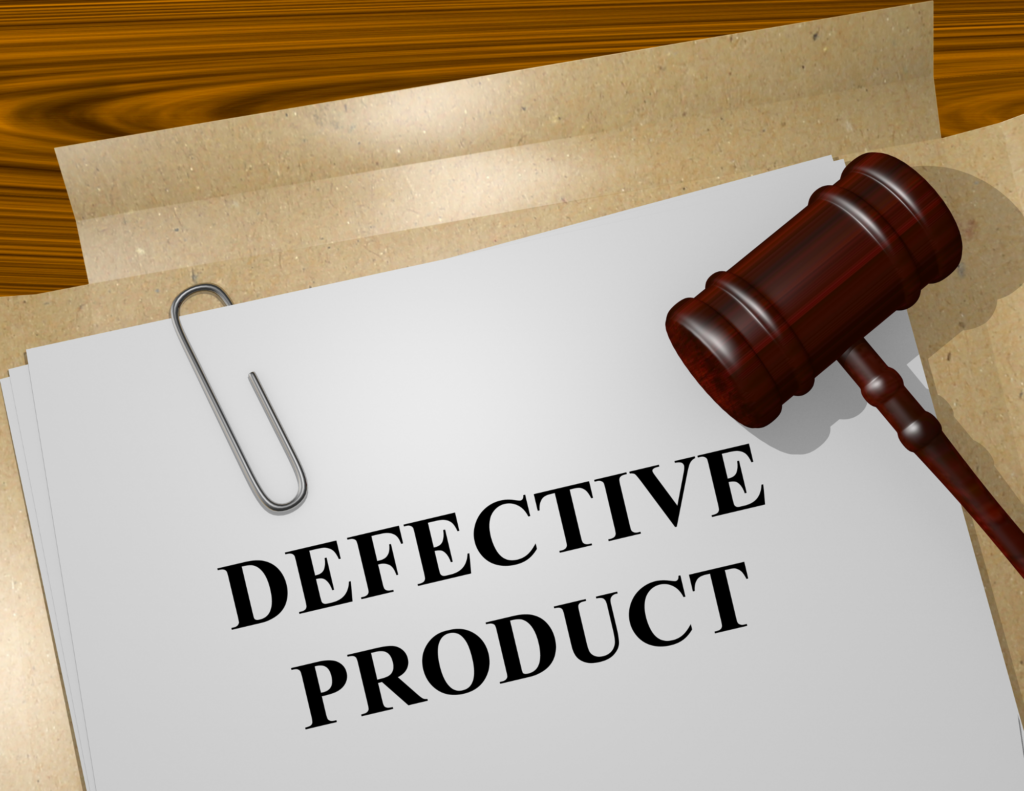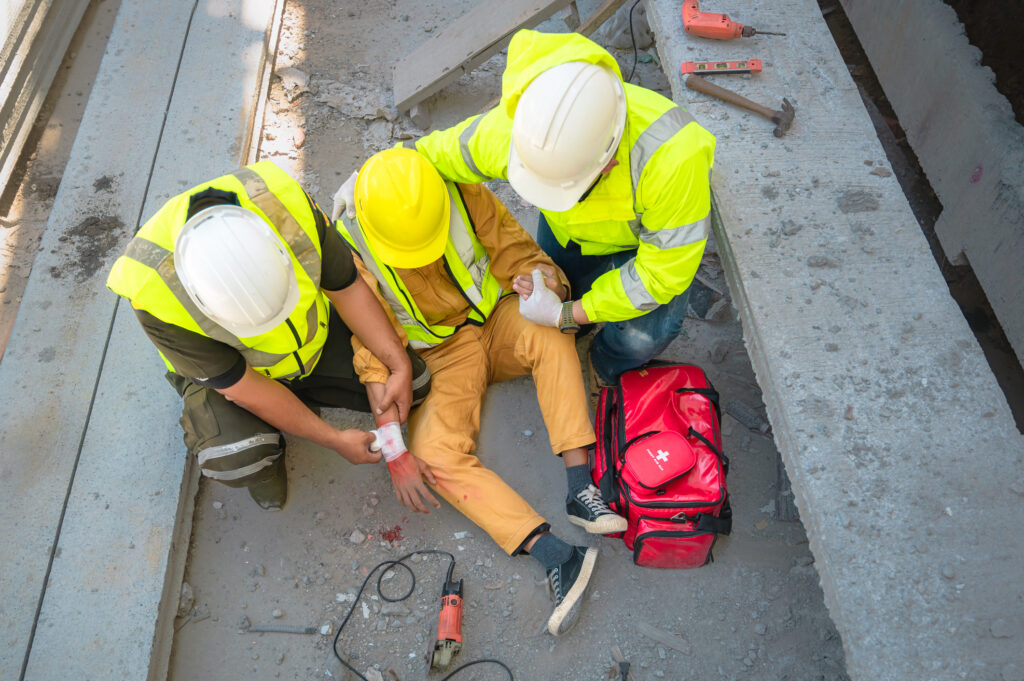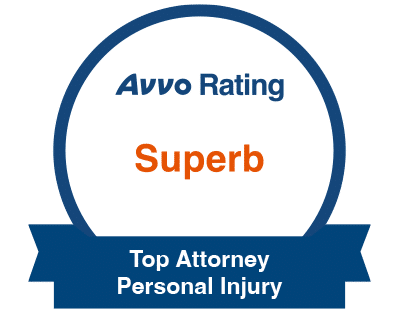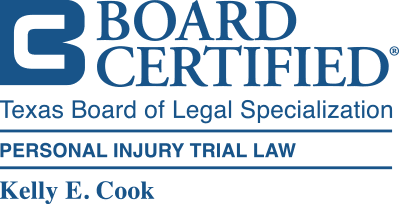Why You Need A Houston Defective Products Lawyer
When you buy a product from a company, you’re giving them much more than your hard-earned money. You’re offering them your trust and possibly even putting your life in their hands.
Imagine your car steering jams while you’re doing 90 MPH on a freeway. What if eating a tainted canned pasta sauce puts you in the hospital? What if your baby powder is poisoned with asbestos?
All of these defective product scenarios are based on real life incidents, and all of them had terrible consequences for the consumers who used them.

Did you know there are over 51,000 deaths and 28 million injuries caused by defective products every year?
Sadly, many of these injured victims and their loved ones are never properly compensated for their pain and suffering.
They miss out on the settlement they deserve because:
- They missed the connection between the defective product and the accident that led to their injuries and losses.
- Manufacturers ignore their consumer report and refuse to engage with them.
- Manufacturers delay or deny their claim even if they’re liable for the defective product.
- Victims get intimidated by insurers and army of lawyers hired by big businesses and want to avoid the stress of complex legal issues.
If you were injured by a defective product, you deserve to be compensated for the injuries, damages, lost wages, and mental anguish you had to bear. But you know well how much these companies can hassle you just for a simple refund or discount.
Do you think they’ll write you a check worth thousands of dollars to cover your losses so easily? Not at all. They have an army of lawyers at their disposal to help them dodge or underpay your claim.
However, it doesn’t mean they can deny you justice. You need an experienced Houston defective products lawyer who can take them on and get you the compensation you deserve.
Our team of experienced defective product lawyers here at Wyly & Cook have helped hundreds of victims get the compensation they deserved.
At Wyly & Cook, we hold all parties in the supply chain accountable for a defective product, and our lawyers work 24/7 to comfortably cover your losses while you recover peacefully.
Injured by a Defective Product?
Let’s Get You Compensated! Call Us For A FREE Case Review And Know What Your Case Is Worth.
Product Liability Law

The courts also put the burden of proving the manufacturer’s negligence on the injured party. It was an impossible task to gather evidence for their claim even if they were bold enough to try.
The tide started turning in the early 1900s as American courts started using a strict liability standard for food and beverages. It took away the burden of proof on the victims and made it easier to recover damages. By the 1960s, this strict liability extended to all products, which led to an explosion of product liability lawsuits.
A number of new regulatory agencies were set up to push manufacturers to make their products as safe as possible. It did improve the safety standards for several products, but millions of people continue to be hurt by defective products every year.
An experienced Houston defective products lawyer can lead a thorough investigation to identify all parties in the supply chain who directly contributed to the product becoming defective.
Product liability claims do not require a contract, and consumers have the right to expect that any product they buy should be safe and effective.
You can file a suit against a wholesaler, retailer, or manufacturer based on the type of product defect you’re dealing with.
Here are the most common types of damages that victims of product defects seek in Houston:
- Physical injuries
- Wrongful death
- Property damages
- Loss of income
- Temporary or permanent disabilities and scars
- Mental anguish
- Punitive damages
Types of Lawsuits You Can File
If you’ve been injured or suffered any other losses because of a product defect, you deserve to be compensated. You have the option to initiate legal action by filing one of these product liability lawsuits:
Lawsuit for Negligence – You must establish that the design or manufacturing of the product was done carelessly, which led to your injuries and losses.
If you’re planning to file a lawsuit on the ground of negligence, you must convincingly prove:
- The product manufacturer owed you a duty of selling you a safe and effective product.
- The product manufacturer violated this duty.
- This violation was the biggest contributing factor to your injuries and losses.
If you can prove the defendant’s negligence in any one of these areas, you have a solid claim to make:
- Faults in the product blueprints and planning stage
- Not maintaining the machines involved in product manufacturing properly
- Failing to predict probable product uses that could be dangerous
- Not testing the product properly or conducting enough safety inspections
- Rushing the product to the consumers without enough preparation
Lawsuit for Strict Liability – Strict liability lawsuits account for most of the product liability cases filed in Texas. You don’t need to play detective to dig up the company’s dirty secrets in the product manufacturing and distribution stage. You just have to prove a legitimate product defect that directly caused your injury.
Once you prove this, the product manufacturer may be strictly liable for your losses. It won’t matter whether they took all precautions while manufacturing or not.
However, they aren’t strictly liable if you purchased a second-hand product. It’s not possible for you to prove whether the defect was caused by the manufacturer or the previous owner of the product. The defective product has to be purchased from their distribution chain directly to enforce strict liability.
Lawsuit for Breach of Warranty – A warranty is kind of a product guarantee offered by the manufacturer. It’s a limited-term contract between you and the manufacturer. So they’ve breached this contract if you’ve been injured by a product covered by express or implied warranty. And you have the right to hold the manufacturer liable for your damages.
Who is Liable For Your Injuries and Losses?
The short answer is – anyone involved in the product supply chain that contributed to the defect.
Here are the parties you can hold liable for your defective product injuries and losses:
Manufacturer – Anyone who contributed to the product’s design, assembly, processing and introduction into the market can be held liable. However, they can’t be held liable if any third party modifies the product before customers buy it.
Retailer – Generally, you can’t hold a product retailer responsible for a defective product in Texas. However, they can be liable if they had a role in designing the product, shared false information about it, or were aware of the defect when they sold it.
Component manufacturers – A lot of parties may be involved in manufacturing a single product. So, if it was a particular part that led to your injury, only the manufacturer of that part will be liable. The manufacturers of the rest of the parts won’t be held responsible for it.
If a company is not the manufacturer of a product but puts labels to appear they produced it, they are held responsible if anything goes wrong. However, if the company notifies the consumer of being only a retailer, the plaintiff cannot be held liable.
Design Defects, Manufacturing Defects, and Failure to Warn
No company must ever justify hunting for profit over the safety of their customers. But we’ve often seen even brands that have become household names indulge in some dangerous acts of negligence. Some have even spent millions of dollars on PR campaigns to cover their tracks and whitewash the damages they cause.
For example – Johnson&Johnson knew their bestselling baby talcum powder was contaminated with asbestos for decades. However, they kept dismissing these claims as “unscientific” and “fake” until they couldn’t sweep the public outrage under the rug anymore.
If they’re willing to let newborns be exposed to cancer-causing chemicals for decades, you can imagine how reckless and ruthless they can be to protect their brand and profits.
They have an army of lawyers to fight your claim while you struggle to pay your medical bills and cover your losses. You need an experienced Houston defective products lawyer to fight for your rights while you peacefully recover with your loved ones.
You can file up to three different claims based on the type of product defect that led to your injury:
Design Defects

You can file a design defect claim in case you were injured by a defect in the product design itself.
For instance, a new electric car model could have faulty engine design that easily overheats and damages the engine. There’s no one else apart from the manufacturer to hold liable in this case. It still won’t take away the risk of your car breaking down or catching fire even if everyone else in the supply chain does their job perfectly.
Design defects can cause damage slowly, and manufacturers of consumer goods must prioritize user safety in their designs.
Do you want to know why manufacturers are willing to throw hundreds of thousands of dollars in legal fees specifically for design defect lawsuits?
So they can save millions of dollars instead.
One successful design defect lawsuit can take down their brand overnight. If they lose, they’ll have to initiate a product recall taking it off the market and redesigning it.
Otherwise, it can lead to a non-stop pile-up of lawsuits from other customers using the same product. So they’re going to throw some serious legal firepower at you if this is the lawsuit you come knocking on their doors with.
Manufacturing Defects
A manufacturing defect can happen if the product deviates from its original design during the production process. It’s not a huge burden for companies to fix unlike design defects, but they will have to trace which part of the supply chain messed up.
If you’ve been injured because of a manufacturing defect, you only need to prove that the product was defective. You don’t have to prove the manufacturer’s negligence in any way.
Let’s say you buy a tablet that ends up exploding because of an overheated battery. Even though there’s no flaws in its official design, it may have been incorrectly assembled or damaged in the factory where it was manufactured.
If you were injured or faced damages by it, you’re entitled to seek compensation from the manufacturer.
You’re going to face less resistance filing a manufacturing defect lawsuit rather than a design defect lawsuit. So don’t think twice about reaching out to a defective product lawyer to review your case.
Warning Label Defects

Prescription medication’s side effects are a great example of a valuable product having inherent defects. It’s not meant for everyone and requires medical supervision.
However, it’s still the manufacturer’s responsibility to warn consumers about the dangers of their product upfront.
Let’s say a prescription medication causes severe hormonal reactions, which should be avoided by pregnant women. If they fail to print this on the medicine bottle label, it’s as good as risking the lives of pregnant women.
Manufacturers aren’t liable for failing to warn you about every possible defect. However, they must share warnings for all risks identified after thorough investigation and testing of their product.
It’s still possible to win a claim even if the warning was printed on the label, but the message was inadequate or unclear.
Injured by a Defective Product?
Let’s Get You Compensated! Call Us For A FREE Case Review And Know What Your Case Is Worth.
Burden of Proof
The burden of proof in a product liability case is less than that of a criminal case, but still a challenge, especially when you’re dealing with the burden of injuries.
According to the Texas product liability law, there are multiple elements needed to prove liability.
You need to prove all of the following aspects to win your product liability claim:
- Proof that your injury was directly caused by the product defect
- The product defect led to injuries, death, or financial damages
- The product was defective when the injury occurred
- It was difficult for the injured customer to anticipate how dangerous the defect was
- Proof that you received the defective product as it was shipped or sold to you by the manufacturer
The next stage of proving liability is not so black-and-white. It depends on the type of defect that led to your injury.
Let’s take a look at how you can prove liability for the three main types of defects that we covered earlier:
Liability for Design Defects

This alternative design could’ve made the product safer to use without taking away its utility.
You must be able to prove that it was economically and technologically possible for the manufacturer to opt for this design when they released their defective product.
Finally, you need to establish a direct link between your injury or property damages to the design defect.
Liability for Manufacturing Defects
Did you know that up to 20-30 companies may be involved in building one little car? One of them could be manufacturing the tires, one could be creating windshields, while others could be making custom nuts and bolts.
How can you prove who messed up in such a massive supply chain? It’s like finding a needle in a haystack. Each consumer problem could be unique unless it’s just one or two parts of the supply chain that is consistently messing up.
They demand a thorough investigation by an experienced defective products lawyer who is familiar with the legal and manufacturing standards in these companies.
On the other hand, it’s easier to identify a clear pattern of problems caused by a design defect. Consumers will start reporting the same issues on a massive scale. In case of a manufacturing defect, you must prove that the defective product you received was not as it was originally designed to be.
Liability for Warning Label Defects
A product can be defective even if it was designed and manufactured properly. Why? Because it fails to properly warn users about the product’s risks.
Every manufacturer needs to provide a crisp and clear summary of the risks involved in using their product designed and manufactured properly but still be defective because it does not provide adequate warning of its risks.
Generally, if a product label meets relevant federal standards, it frees the manufacturer from any liability of causing injuries and damages.
However, you may file a lawsuit if it fails to meet these standards, hides product safety data during the federal approval stage, or if the regulations aren’t sufficient.
Urgent Steps to Take If You’ve Been Injured by a Defective Product
Building a strong defective product claim can be an uphill task if you don’t take some urgent steps to lay a strong foundation.
Here are 4 important steps to take if you’ve been injured by a defective product:
Get Medical Care Immediately
Seeking medical attention for your injuries is the first action you must take after being injured by a defective product.
It’s easy for the lawyers and insurers of the defending parties to hurt your claim if you unnecessarily delayed medical care, which could’ve worsened your condition.
You need to provide as many official medical reports and statements to back up your claim, including:
- Hospital admission details
- Hospital discharge details
- Your doctor’s official diagnosis
- X-rays, MRIs, blood reports, and other lab reports.
- Surgery records
- Medical prescriptions
Document Evidence of the Accident Scene
Capture as many photos and videos as you can to document the accident scene. Focus on the defective product and the injuries and damages you faced because of it.
Make a note of all the circumstances in which your injury occurred.
The time stamps of the photos and videos you collect will also help in establishing the accident timeline.
Save the marketing videos of the product sold by the manufacturer to compare it with your defective product.
Preserve the Defective Product
You may find it hard to look at the defective product that hurt you. However, it can also play the biggest part in redeeming you and getting you the compensation you deserve. It’s important to keep it in the same condition as it was when your accident occurred.
The court will examine the defective product as much as they examine your statements. Let the product speak for you. It’ll help back up your claim that it was sold to you in a defective condition or without a proper warning label. This will concretely establish the negligence of the defending parties.
Contact a Defective Product Lawyer
The most challenging part of seeking compensation begins once you file a claim. And it involves a lot more than three steps that are far more complicated.
But if you’ve taken care of the first three steps, a defective products lawyer will take care of every other step – from filing to winning your claim.
Food Product Liability
Food producers/manufacturers/resellers are heavily regulated by agencies like the FDA, USDA, and FSIS. They are held to higher standards than other industries because of what’s at stake – your health.
Food is a matter of survival, not a luxury.
If the start of every grocery trip is making you anxious about ending on the hospital bed, then there’s something seriously wrong with your food quality.
Ideally, every food producer must strive for zero defects, but in reality, one in six Americans suffers from food poisoning every year.
It could be caused by bacteria and viruses, parasites, molds, toxins, contaminants, or allergens. These are common threats lurking in your foods that could trigger headaches, vomiting, cramps, dehydration, diarrhea, or more severe effects like kidney failure, nerve damage, and death.

Food poisoning – Using poor quality foods or expired ingredients that lead to sickness. Most victims with mild symptoms choose to settle it with a free meal or discount offered by the restaurant as compensation.
But if your symptoms are severe and gave you a difficult time to recover, you can file a suit to get the compensation you deserve.
Negligence – Food businesses must serve what the customers expect and deserve.
They can be held liable if they irresponsibly serve you a hamburger with cheese even though you clearly specified you wanted one without cheese. You could be lactose intolerant, or perhaps be dealing with some other severe allergies.
The business may either deny service or customize your order exactly as you asked to avoid any liability.
Contamination by foreign substances – If your product contains any substance not on the printed list of ingredients, you’re consuming a contaminated product. It could have consequences neither you or the manufacturer can anticipate. Unfortunately, a lot of people find out too late and get really sick after consuming them.
If you noticed a foreign substance present in your food, you can file a claim and seek compensation from the company. For instance, Costco had to shell out $200,000 when a family sued them for selling a food product that had bugs in it.
Improper warning labels – A standard food product warning label must contain a list of all its ingredients, instructions for properly handling and maintaining it, along with allergy and temperature warnings. One wrong ingredient can put your life at risk. So it’s critical to label each of them with clear wordings so that a customer can read them properly.
Some food manufacturers have even been caught using false labels to market their products. For instance, Cargill Inc was sued for marketing their chemical-packed sweetener as “natural.”
They need to provide clear warnings for safely handling things that may appear obvious, such as hot coffee. Remember the all-time famous McDonald’s hot coffee lawsuit? They were selling coffee that was 40 degrees higher than similar restaurant chains, but failed to add a warning label on their coffee cups. A woman who accidentally spilled this hot coffee over herself suffered third-degree burns. She ended up winning nearly $3,000,000 in damages.
The potential defendants in a product liability lawsuit include the grower, refiner, wholesaler, retailer, and restaurant. Negligence can be the basis of a case if a party knew there was a problem and did nothing to remedy it or alert the consumer.
To file a product liability case, the plaintiff must prove that they were injured due to the defect in the food and link the condition to the food.
Wyly & Cook Services
Guess what these three companies have in common….
- Pfizer knew their heart valve was literally a ticking time bomb and didn’t warn any of their customers.
- Johnson&Johnson’s popular drug Propulsid wasn’t taken off the market even after they discovered lethal side effects, which led to 300 deaths and 16,000 injuries.
- The Peanut Corporation of America chose to recook and sell their food products even after finding out that they’re infected with rodent droppings.
Yes, they’re all crooked capitalists that threw consumer safety under the bus to keep their profits up.
But the only reason you know about them is because they were exposed by the American justice system.
And thanks to it, thousands of victims affected by these companies got compensated for their injuries, damages, lost wages, pain and suffering.
Liable companies have to spend nearly $700 billion to compensate victims injured or killed because of product defects. We know that no amount can truly take away the pain and suffering you go through, but it can help you heal comfortably, with dignity.
An experienced defective product lawyer and a conscious consumer can push companies to become more responsible even more powerfully than regulatory agencies can.
At Wyly & Cook, our team of experienced defective product lawyers offer free consultation for your defective product claim and fast-track your lawsuit.
We won’t settle until we see you’re comfortably settled and compensated. And you won’t have to pay us a dime until we win.
Our team of experienced product liability attorneys have won hundreds of lawsuits covering all kinds of defective product cases, such as:
- Unsafe drugs
- Defective medical equipment
- Vehicle defects
- Gas tanks
- Tools and electrical equipment malfunctions
- Cosmetics
- Defects in children’s toys
- Contaminated foods
- Defective household products
Injured by a Defective Product?
Let’s Get You Compensated! Call Us For A FREE Case Review And Know What Your Case Is Worth.
Frequently Asked Questions
What is product liability law?
Product liability law is a way for people to seek compensation from manufacturers or sellers if they’ve been injured by a defective product. It requires the manufacturer to provide customers with a product that reasonably meets their expectations.
If you’ve purchased a product directly from the manufacturer’s supply chain and have faced injuries or damages by using it as intended, you can legally seek compensation from all liable parties.
Texas holds all manufacturers of defective products strictly liable for damages, but you may initiate a product liability lawsuit on another legal basis if needed.
What are design defects, and how do they affect product liability?
If you were hurt because of a product design defect, you can file a design defect claim.
Establishing liability for this claim may be tricky since you need to prove that inherent design of the product is to blame for your injury. You’ll also have to prove that a safer alternative design with the same level of utility was possible, which was overlooked by the manufacturer.
You’ll have to prove it was economically and technically feasible to launch a safely designed product when they released it.
Finally, a direct link between your injury/damages and defective product design will have to be established.
What is the burden of proof in a product liability case?
Texas follows a strict liability policy in product liability cases. What that means is that you don’t have to prove whether the manufacturer or any other party was negligent or not.
Your only burden of proof is to ensure that the product you purchased was defective, which directly led to your injuries and damages.
You need to prove all these conditions support your product liability claim:
- Proof of a direct link between your injury and the product defect
- Proof showing how this defect led to injuries, death, or economic losses
- The product was defective at the time of the accident
- There was no way for the injured customer to anticipate the dangerous consequences of using the defective product
- Proof that you directly purchased the defective product from the manufacturer or retailer.
What are the potential defendants in a food product liability case?
You can hold any party that manufactures, sells, distributes, packages, or serves defective food liable for your injuries and losses.
How does negligence play a role in product liability cases?
You must prove that the product design or its manufacturing process was carried out with negligence, which caused your injuries and losses.
Here’s what you must prove to file a defective product lawsuit on the ground of negligence:
- The manufacturer had a duty of providing you a safe and fully functional product.
- The manufacturer intentionally or unintentionally violated this duty.
- This violation was the direct trigger of the accident that led to your injuries and losses.
If you can prove the defendant’s negligence in any one of these areas, you have a solid claim to make:
- Defective product blueprints and negligent planning
- Poor maintenance of the product manufacturing machinery
- Failing to anticipate dangerous product uses
- Improper safety inspections and testing before launching the product
- Fast-tracking the product for sale without enough preparation
What evidence is necessary to prove a product liability case?
The stronger your evidence, the greater your compensation. It’s a golden rule of every product liability case.
Documenting evidence should be your first priority as soon as you face any kind of injuries or damages by a defective product. If you do this one job well, it’ll make your lawyer’s job a piece of cake.
Here are some important pieces of evidence to help you build an undeniable product liability claim:
Preserve the defective product – You may find it hard to look at the defective product that hurt you. However, it can also play the biggest part in redeeming you and getting you the compensation you deserve. It’s important to keep it in the same condition as it was when your accident occurred.
The court will examine the defective product as much as they examine your statements. Let the product speak for you. It’ll help back up your claim that it was sold to you in a defective condition or without a proper warning label. This will concretely establish the negligence of the defending parties.
Medical records – Seeking medical attention for your injuries is the first action you must take after being injured by a defective product. It’s easy for the lawyers and insurers of the defending parties to hurt your claim if you unnecessarily delayed medical care, which could’ve worsened your condition.
You need to provide as many official medical reports and statements to back up your claim, including:
- Hospital admission details
- Hospital discharge details
- Your doctor’s official diagnosis
- X-rays, MRIs, blood reports, and other lab reports.
- Surgery records
- Medical prescriptions.
Medical bills – Accidents can be the fastest way to drain your bank account. It’s difficult to anticipate how quickly your medical bills start piling up once you’re injured by a defective product. And it’s even harder to negotiate or deny treatment when your health is at stake. Keep a paper trail of every medical expense that comes out of your pocket after your injury.
The court can’t determine a compensation amount based on a wild guess. So store all your receipts safely. You need a solid paper trail documenting your medical expenses, which will play a huge part in determining your compensation amount.
Pictures and videos – Capture as many photos and videos as you can to document the accident scene. Focus on the defective product and the injuries and damages you faced because of it.
Make a note of all the circumstances in which your injury occurred. The time stamps of the photos and videos you collect will also help in establishing the accident timeline. Save the marketing videos of the product sold by the manufacturer to compare it with your defective product.
Accident Reports – In case you had called law enforcement officers to the accident scene, you’re at an advantage. They’ll give you a detailed accident report that will hold high value in court since they’re a neutral authority.
Proof of lost wages – It’s hard to ignore the burden of losing your monthly pay check while your bills keep draining the rest of your savings. Some injuries may only take demand a few weeks of recovery, but some can be severe enough to take months for healing.
It’s possible you may even lose your job or your ability to work permanently. It’s important to keep your pay stubs and tax returns handy to estimate a more accurate compensation sum.
Insurance paperwork – Defective product lawyers can review your insurance policy and take care of the paperwork needed to process your claims for immediate recovery. If your insurance paperwork is in order, you can cover your medical bills easily.
Evidence of similar product lawsuits and product recalls – An experienced defective product attorney will look up the history of lawsuits or recalls initiated against the manufacturer. It’ll help strengthen the value of your evidence if it can be backed up by the experiences of other consumers.
Eyewitness statements – Keep the contact information of all eyewitnesses present at the scene of the accident. Their recorded statements along with expert testimonies will help strengthen your case.
What services does Wyly & Cook offer for product liability cases?
Product liability cases can be complicated. Insurers and lawyers of the liable parties may keep stalling or delaying your claim.
At Wyly & Cook, we protect your interests while shielding you from all the stress of being involved in the legal process of a product liability case.
Clarity, comfort, and compassion is the heart of all our services, which includes:
- Offering a FREE case review to let you know what your case is worth
- Taking up your case on a no win-no fee basis
- Identifying all the parties in the supply chain who were at fault
- Leading a thorough investigation of your case and adding more evidence
- Negotiating with the insurance providers of the liable parties
- Taking your case to trial in a court if negotiations fail
- And finally, getting you the compensation you deserve
Why is it crucial to get an experienced attorney early in the product liability case process?
By hiring an experienced attorney early in your product liability case, you instantly unlock two huge benefits:
- Your lawyer will review the merits of your case and ensure you don’t miss a single step in your process of seeking compensation
- Your lawyer will take away all the stress of complicated legal processes and hard-nosed negotiations. This will allow you to focus exclusively on your recovery with your loved ones.
At Wyly & Cook, our team will give you a FREE case review and let you know what your case is worth upfront. This will make it easy for you to decide whether you wish to pursue legal action or not.
They will help you navigate the legal system, gather evidence, file your claim, negotiate with insurers and lawyers, and get you the settlement you deserve.










